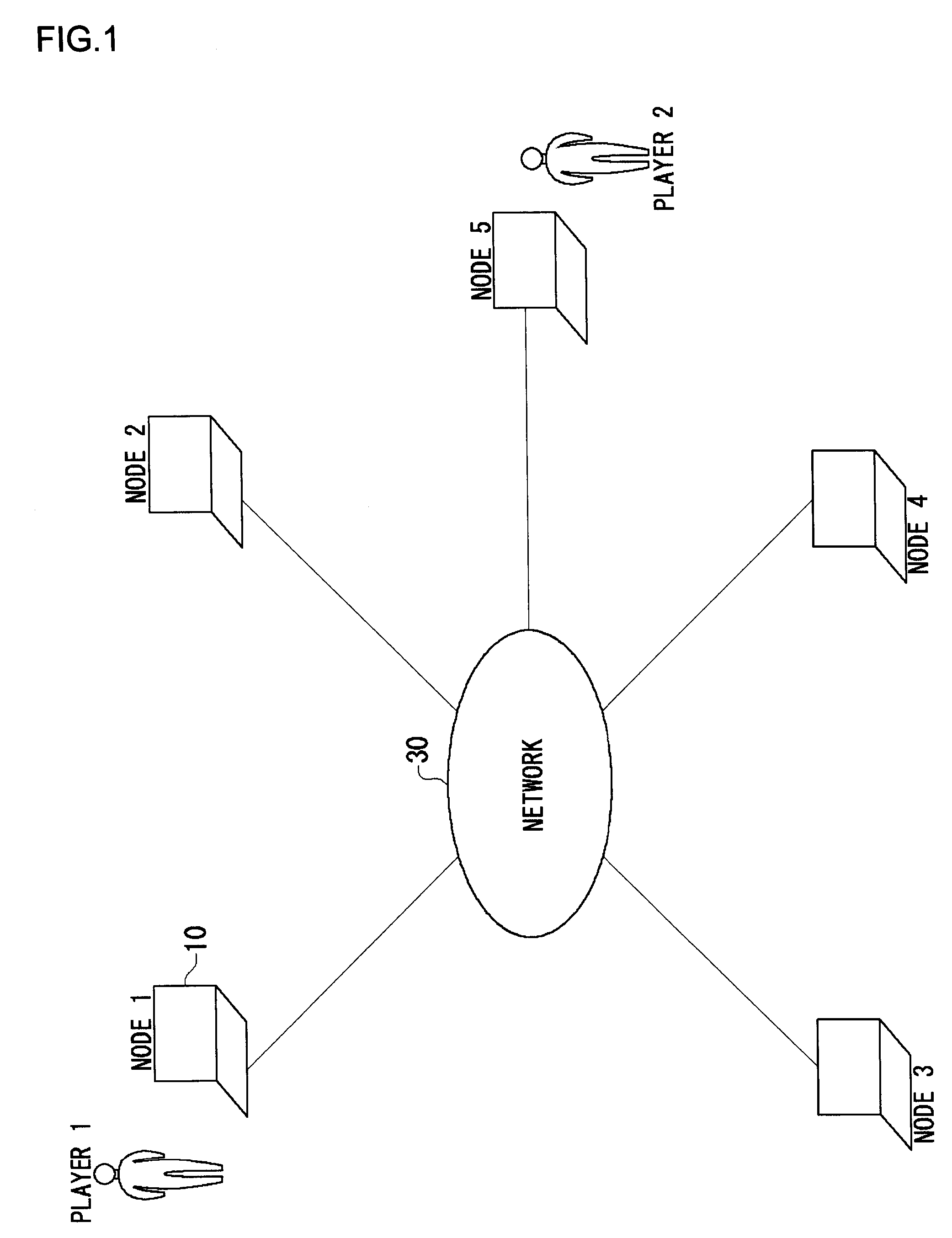Task allocation method and task allocation apparatus
a task allocation and task technology, applied in the field of task allocation methods and task allocation apparatuses, can solve problems such as difficulty in switching to a different, loss of consistency,
- Summary
- Abstract
- Description
- Claims
- Application Information
AI Technical Summary
Benefits of technology
Problems solved by technology
Method used
Image
Examples
example
[0151]A description will now be given of specific examples of how tasks are actually allocated to nodes by applying the steps described in the described embodiment.
[0152]A description will be given of processing tasks in antecedent-dependent relation shown in FIG. 21 in the distributed application system shown in FIG. 1 including five nodes. Referring to FIG. 21, numerals inside blank circles denote a set of “player ID and a task ID”. For example, “1-1” denotes the “first task of the player 1”. Referring to FIG. 21, tasks related to the player 1 include “1-1”-“1-6”, and tasks related to the player 2 include “2-1”-“2-6”. “3-1” denotes a task which should be executed in a single node for both players. As mentioned before, an example of such a task is collision determination in a beat'-em-up game application.
[0153]A node 1 is designated in advance for the tasks “1-1” and “1-6”. A node 5 is designated in advance for the tasks “2-1” and “2-6”. These are tasks like key input by a controll...
PUM
 Login to View More
Login to View More Abstract
Description
Claims
Application Information
 Login to View More
Login to View More - R&D
- Intellectual Property
- Life Sciences
- Materials
- Tech Scout
- Unparalleled Data Quality
- Higher Quality Content
- 60% Fewer Hallucinations
Browse by: Latest US Patents, China's latest patents, Technical Efficacy Thesaurus, Application Domain, Technology Topic, Popular Technical Reports.
© 2025 PatSnap. All rights reserved.Legal|Privacy policy|Modern Slavery Act Transparency Statement|Sitemap|About US| Contact US: help@patsnap.com



